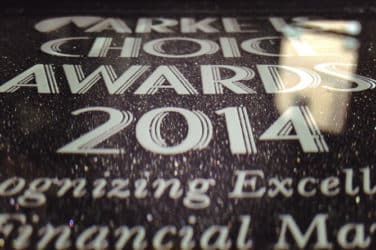
MARKETS MEDIA SPOKE with Gary McAnly, managing director and U.S. head of derivatives trading at Allianz, via telephone on Jan. 24.
Markets Media: Please describe your roles and responsibilities.
Gary McAnly: I oversee U.S.-based derivatives trading from New York. We support our New York-based asset managers as well as our asset managers on the West Coast. We also have a Frankfurt-based global platform that I report into. They also have a large derivative platform that I interact with and discuss ideas with, but I don’t execute for folks in Europe.

Gary McAnly, Allianz Global Investors
The main products we execute for have been in existence for about eight years. The focus is mainly absolute-return strategies using index options and volatility products. We also trade single-stock vol and options where the focus is more directional in nature.
MM: What is your career background?
GM: I’ve been doing this for 20 years. For the first five years, I traded equity options, convertibles and high yield bonds. I worked at a firm in the Southeast, then I came to New York in the late 1990s to start up a trading desk for a predecessor firm of Allianz. I ran that for five years, and then I ran another global trading desk for Allianz for another five years. In those roles I ran multi-asset desks across derivatives, credit and equity. I’ve been in the current role here for a handful of years, dedicated purely to derivatives.
MM: From your seat, what are the implications of the ongoing shift in derivatives trading from OTC to exchange-based with central clearing?
GM: We actually stopped trading OTC during the financial crisis a few years back. It’s something we’re looking to do again, but I can’t get into the depths of swap execution facilities and central clearing. It’s something we keep a keen eye on because we may be re-entering the market, but I don’t have any recent color.
Our main flows are in listed and flex options, which are OTC look-alikes, but centrally cleared. So they are in fact listed options that behave like OTC options in terms of pricing and customization.
MM: Which trading venue(s) do you use?
GM: About 80% of our flow is still voice-brokered. The reason behind this is we do a fair amount of complex and off-ratio spreads that may need a capital commitment, or help from a dealer to facilitate — so they’re really not conducive for any electronic platform. The other 20% is electronic. That’s a bit more flow-based or agency-based.
We have a stable of brokers to choose from. In the derivatives world, there are really only six to eight real risk takers in the U.S. market. We have relationships with about 15 total dealers or brokers, including a handful of agency brokers and a couple firms who have a presence in the pits on the exchange floors.
MM: What are the main skill sets to trading derivatives versus electronic equity trading? Is it more relationship-based?
GM: Yes, it absolutely is relationship-based. It’s about understanding where particular brokers have risk appetites. It’s part of the job of any buy-side trader to really stay in the flow of brokers’ axes on a daily basis, so you can read the tea leaves and see where they might want to buy risk or shed risk. If you’re on the other side of those trades, it’s usually a good start to the exercise in matching up at a fair level to ultimately get something done.
MM: What are the competitive advantages/differentiators of your trading group vs. peers?
GM: We’ve been involved in the Index options and vol-of-vol market for about eight years. That may not sound like a long time, but given the growth in these markets and products over that timeframe, we have really been at the forefront of a relatively new world. In the vol-of –vol space we spent a fair amount of time early on speaking with researchers and academics behind the creation of these products prior their launch. We have certainly grown up with the product, and developed successful strategies around those products, which have grown exponentially in trading volumes from seven or eight years ago.
MM: How would you characterize 2013 in the derivatives space? Was it a year of great change?
GM: It was not a big change at all. With the equity markets advancing in a dramatic fashion and in lockstep, I think most derivative players that are directional or have carry strategies on did quite well. Those folks that were long vol or vol-of-vol did not do very well.
Outside of the space I transact in everyday, it seemed like there were a lot of changes because of the press headlines, but I don’t think big practitioners really had a lot of change. Heavy swap users have had ample time to adjust to what’s going on. We currently have very little exposure to the swaps world that is centrally cleared — there are some new things that people had to adjust to, but it wasn’t as if it was overnight change.
MM: Any additional thoughts?
GM: We have a real niche business here. There are not a lot of businesses in the marketplace that are similar to ours that specifically use optionality as a dedicated, stand-alone absolute return product. It’s not just an add-on or complement to a broader portfolio akin to perhaps what a credit fund might do in buying vol for protection here or there or an equity dedicated fund that just dabbles in it from time to time.
Here it’s a real business, and the team is in those markets every day. I think that’s what differentiates in the the sell-side’s view — for us, trading these products, vol and optionality, is the pure focus of this strategy here at Allianz.



